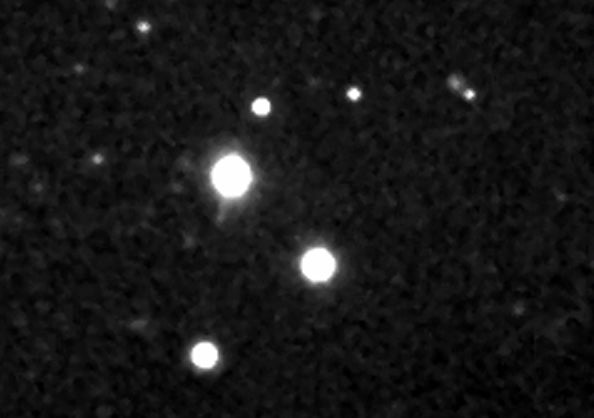Observers love looking at distant objects — and the farther, the better. Well, how about an object that’s more than 2 billion light-years away and visible through an 8-inch telescope? 3C 273 is that object. It’s a quasar: a super luminous active galactic nucleus.
At the center of the celestial wonder sits a supermassive black hole that weighs in at about 1 billion solar masses. This behemoth has lots of gas around it. As the gravity from the black hole pulls the gas in, it forms a swirling disk. A huge amount of energy is then generated by friction and other forces in the disk.
Quasars are the most luminous objects in the universe, and thus visible across vast distances. The brightest known quasar, 3C 273 also has the distinction of being the first quasar ever identified.
3C 273 lies in the constellation Virgo the Maiden. It appears starlike and glows softly at magnitude 12.9. A good star chart, however, will allow you to quickly identify it. Begin your search 4.7 northwest of magnitude 2.7 Gamma (γ) Virginis.
Astronomers can’t determine the distance to 3C 273 directly, so they infer it by measuring its redshift, which is the amount its light is stretched due to its motion away from us. The greater the redshift, the more distant the object is. 3C 273 has a redshift of 0.158, which corresponds
to a distance of 2.443 billion light-years.
Let’s close with a number that properly demonstrates the stunning brightness of 3C 273: The object is 3.99 trillion times as bright as our daytime star.
Make sure to explore Astronomy’s full list of 101 cosmic objects you must see. New entries will be added each week throughout 2022.










